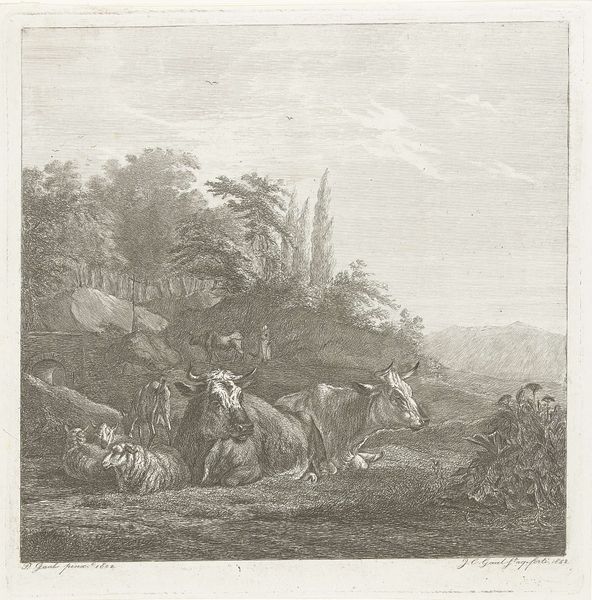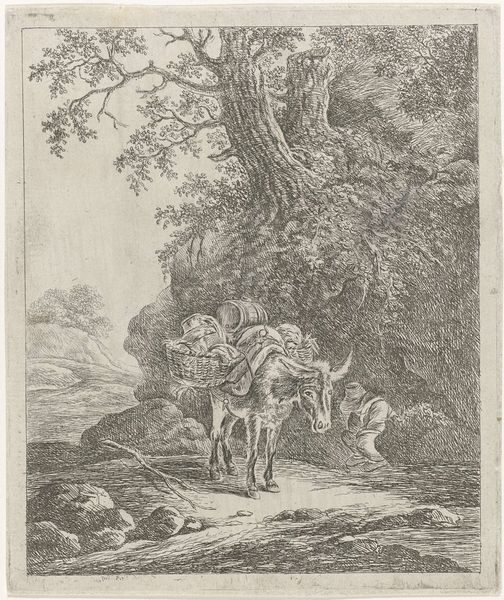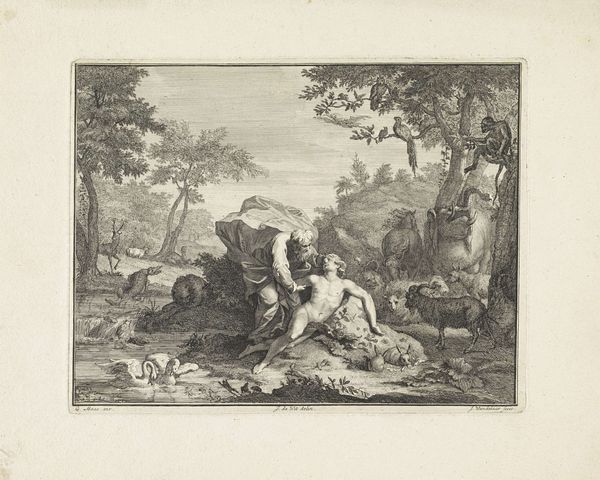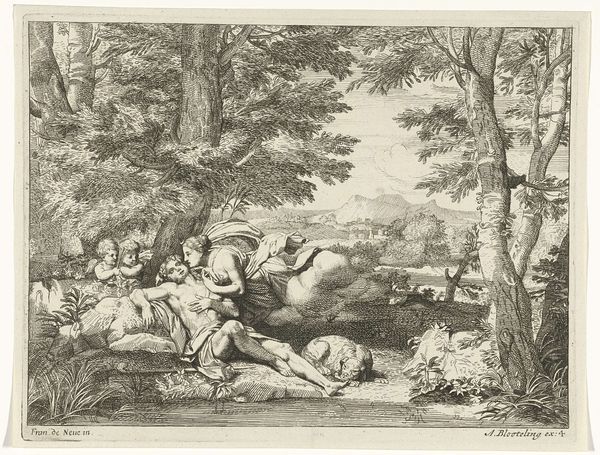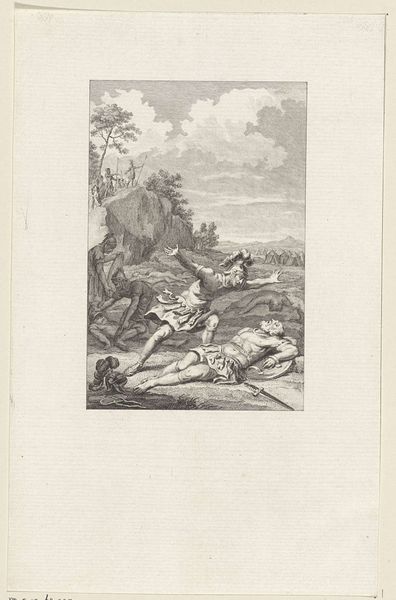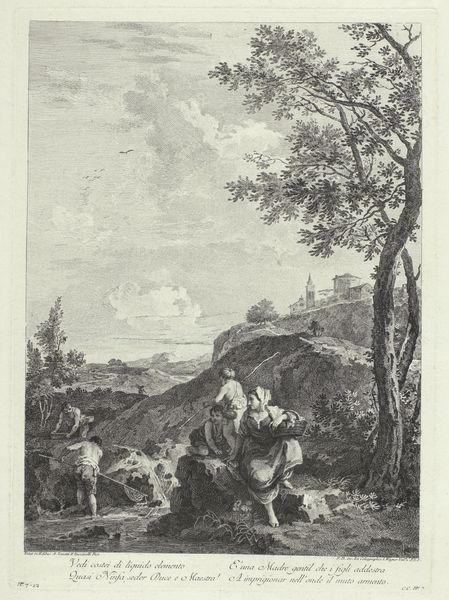
drawing, etching
#
pencil drawn
#
drawing
#
etching
#
pencil sketch
#
landscape
#
history-painting
#
realism
Dimensions: height 310 mm, width 239 mm
Copyright: Rijks Museum: Open Domain
Editor: Right now we're looking at "Cows, Goats and Sheep in a Mountainous Landscape with Ruins," a drawing by Diederik Jan Singendonck, from 1814, using etching techniques. What I see first is stillness. It’s like the animals are paused in a pastoral dream, contrasted with the history implied by the crumbling ruins. What catches your eye, and how do you read this work? Curator: It whispers, doesn't it? The quiet dignity of the animals, yes, but also the soft greys, they bleed into a kind of melancholy, wouldn’t you say? Think of the year. 1814. Europe’s weary, just post-Napoleon. These ruins aren’t just stone; they're a stand-in for empires collapsing, memories fading. Singendonck wasn't simply sketching cows; he was chronicling a kind of...acceptance of decline. See how nature just...absorbs the ruin? Life goes on, albeit tinged with the past. What sort of stories do you think those animals could tell if they could talk? Editor: That makes me think of time as cyclical. The ruins were built, crumbled, and nature is reclaiming it all while the animals carry on, oblivious. So the “history painting” tag feels right, but not in a grandiose battle scene way. More subtle. A personal, reflective history? Curator: Precisely! Not bombastic history with trumpets and cannons, but a quieter reckoning, felt in the rustle of leaves and the bleating of sheep. And look at the detail—the texture on the cows' hides, the way the light catches the edge of the ruin. He's inviting us to feel the weight of the past, but also the enduring power of the everyday. Editor: It’s incredible to see so much history, loss, and even hope, wrapped up in what I initially saw as just a simple landscape with farm animals. It's like Singendonck turned a quiet moment into a deep meditation. Curator: Exactly! It’s a little visual poem. What initially reads as calm pastoral scene reveals itself to be far more evocative, wouldn’t you say? A melancholic but peaceful elegy to time and transition. I find it rather moving.
Comments
No comments
Be the first to comment and join the conversation on the ultimate creative platform.

